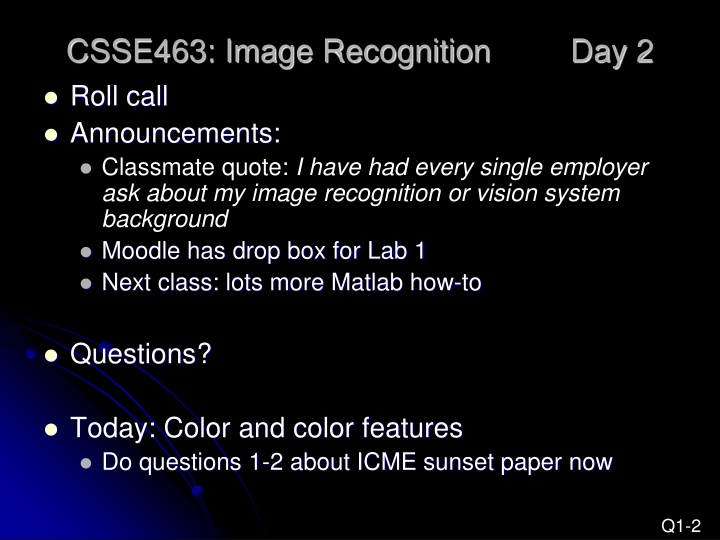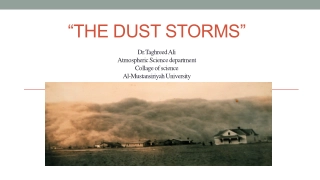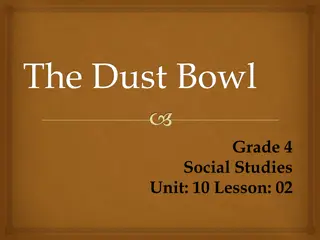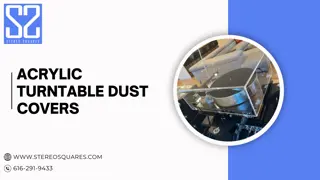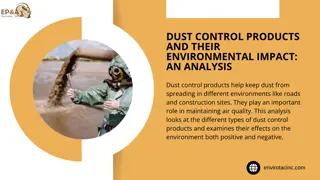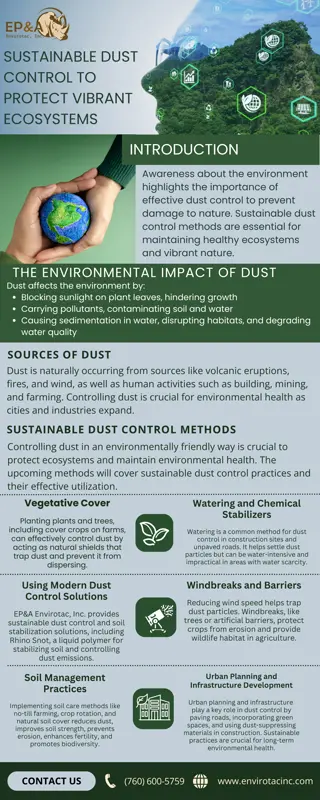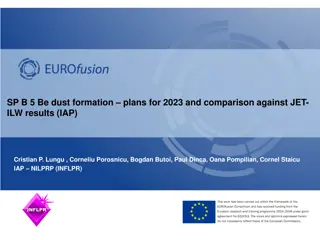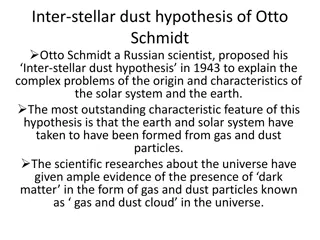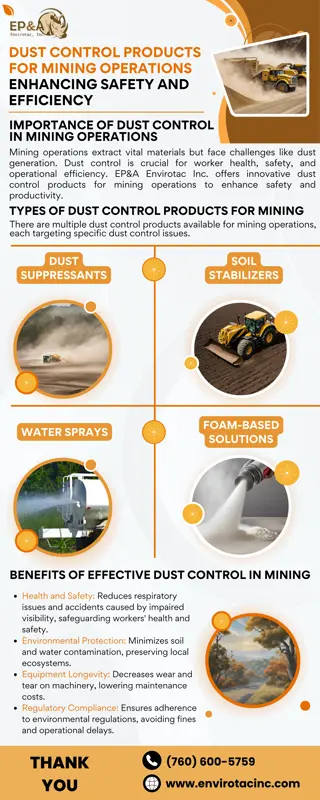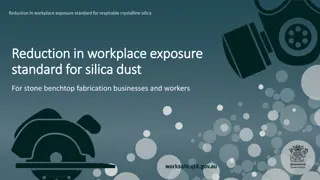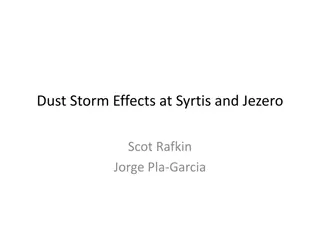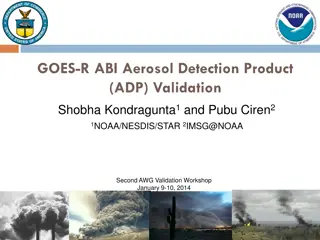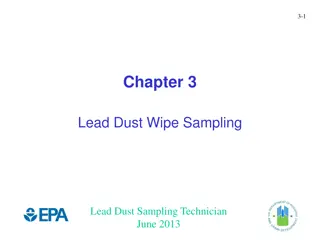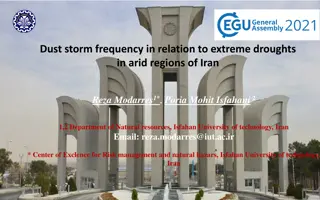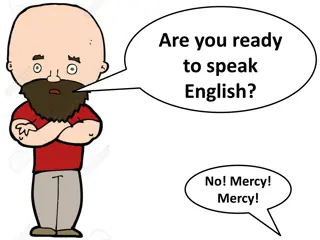Dust Particle Transmission Study
Investigation and simulation on the transmission, emersion, and dispersion of dust particles from the point of generation in manufacturing processes. The project aims to propose solutions for controlling dust hazards efficiently.
Download Presentation

Please find below an Image/Link to download the presentation.
The content on the website is provided AS IS for your information and personal use only. It may not be sold, licensed, or shared on other websites without obtaining consent from the author.If you encounter any issues during the download, it is possible that the publisher has removed the file from their server.
You are allowed to download the files provided on this website for personal or commercial use, subject to the condition that they are used lawfully. All files are the property of their respective owners.
The content on the website is provided AS IS for your information and personal use only. It may not be sold, licensed, or shared on other websites without obtaining consent from the author.
E N D
Presentation Transcript
CSSE463: Image Recognition Roll call Announcements: Classmate quote: I have had every single employer ask about my image recognition or vision system background Moodle has drop box for Lab 1 Next class: lots more Matlab how-to Day 2 Questions? Today: Color and color features Do questions 1-2 about ICME sunset paper now Q1-2
Pixels to Predicates 1. Extract features from images 2. Use machine learning to cluster and classify . 0 4561 . 0 1928 = x ... . 0 2756 Color Texture Shape Edges Motion Principal components Neural networks Support vector machines Gaussian models
Basics of Color Images A Representation of additive color mixing. A color image is made of red, green, and blue bands. Additive color Colors formed by adding primaries to black Comments from graphics? RGB mimics retinal cones in eye. RGB used in sensors and displays Why 32 bit? Why 16M colors ? A typical CRT gamut.The grayed-out horseshoe shape is the entire range of possible colors. The colored triangle is the gamut available to a typical computer monitor; it does not cover the entire space. The corners of the triangle are the primaries for this gamut; in the case of a CRT, they depend on the emittance of the phosphors of the monitor. Source: Wikipedia
Basics of Color Images Each band is a 2D matrix Each R, G, or B value typically stored in a byte. Allows what range of values? The 4th byte is typically left empty Allows for quicker indexing, because of alignment Reserved for transparency (in graphics) How much storage, in KB, is required for a 128x192 thumbnail color image (uncompressed, including unused 4th bytes)? Q3-4
We can extract different types of color features (statistics) from images 1. Color histograms 2. Color moments 3. Color coherence vectors Related considerations: Some color spaces work better Spatial components can help Q5
Color histograms Gives distribution of colors Sample to left is for intensities only Pros Quantizes data, but still keeps lots of info Cons How to compare two images? Spatial info gone Histogram intersection (Swain and Ballard)
Color moments Central moments are statistics 1st order = mean 2nd order = variance 3rd order = ____ 4th order = ____ Some have used even higher order moments, but less intuitive For color images, take moments of each band skew kurtosis m1 = 132.4 m2 = 2008.2 m3 = 4226 m4 =12.6 million m1 = 116.3 m2 = 1152.9 m3 = -70078 m4 = 7.4 million 1 n ( ) = i d = m x for d > 1 d i n 1 Q6
RGB color space Red/green/blue Rectangular axes Simple, but non-intuitive mixing Source: Wikipedia http://xstitch.zachrattner.com/Images/RGBCube.png http://dev.bowdenweb.com/css/colors/i/rgb-color-space-visualized-as-a-cube-msdn.png Q7
HSV color space HSV color space as a conical object Hue-saturation-value (HSV) cone also called HSI (intensity) Intuitive H: more than what color : it s wavelength; position on the spectrum! S: how vibrant? V: how light or dark HSV color space as a cylindrical object Distance between colors Must handle wraparound of hue angle correctly (0 = 2 ) Matlab has method to convert from rgb to hsv, can find formula online. Q7 Wikipedia, http://www.getreuer.info/_/rsrc/1311740880043/home/colorspace/colorspace_01.jpg?height=209px&width=462px
Interactive HSV color picker http://www.colorpicker.com/
Other color spaces LST (Ohta)1 L = luminance: S and T are chroma bands. S: red vs. blue: S = (R B) / sqrt(2) T: green vs. magenta: T = (R 2G + B) / sqrt(6) L = (R + G + B)/sqrt(3) These 3 are the principal components of the RGB space (PCA and eigenvectors later in course) Slightly less intuitive than HSV No problem with wraparound Others YIQ (TV signals), QUV, Lab, LUV http://www.scarse.org/docs/color_faq.html#graybw Y. I. Ohta, T. Kanade, and T. Sakai, Color information for region segmentation, Computer Graphics and Image Processing, Vol. 13, pp. 222-241, 1980. http://www.ri.cmu.edu/pub_files/pub4/ohta_y_1980_1/ohta_y_1980_1.pdf Q8
Spatial component of color Break image into parts and describe each one Can describe each part with moments or histograms Regular grid Pros? Cons? Image regions Pros? Cons? Q9
